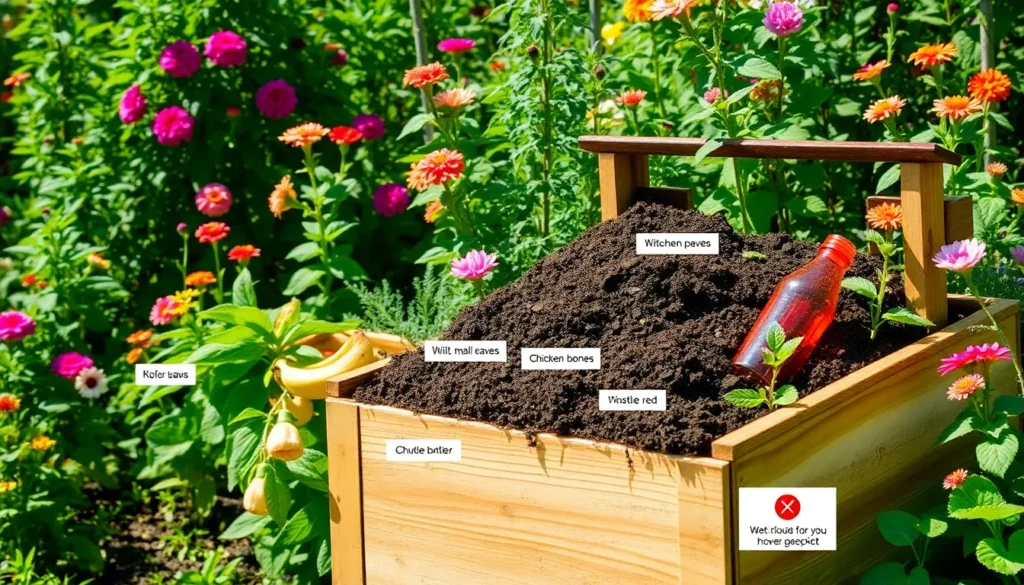Gardening is a journey where every handful of soil tells a story, with composting often serving as the chapter that brings life full circle. Whether you’re just getting your hands dirty or have been nurturing your garden for years, mastering the art of composting can transform your gardening experience and enrich your plants in ways you might never have imagined. Composting is not just about reducing waste; it’s about creating a sustainable cycle that breathes life back into the earth while enhancing the health and vitality of your garden.
Understanding common composting pitfalls is crucial for anyone eager to harness this natural process effectively. In this article, we’re going to unravel the nine most common mistakes gardeners make with composting. From avoiding the wrong materials to getting the balance just right, these insights will help you refine your composting technique and ensure your garden thrives. So, grab your gardening gloves and let’s delve into the secrets of successful composting, turning potential stumbling blocks into stepping stones for a flourishing garden.
Ignoring Green-Brown Balance
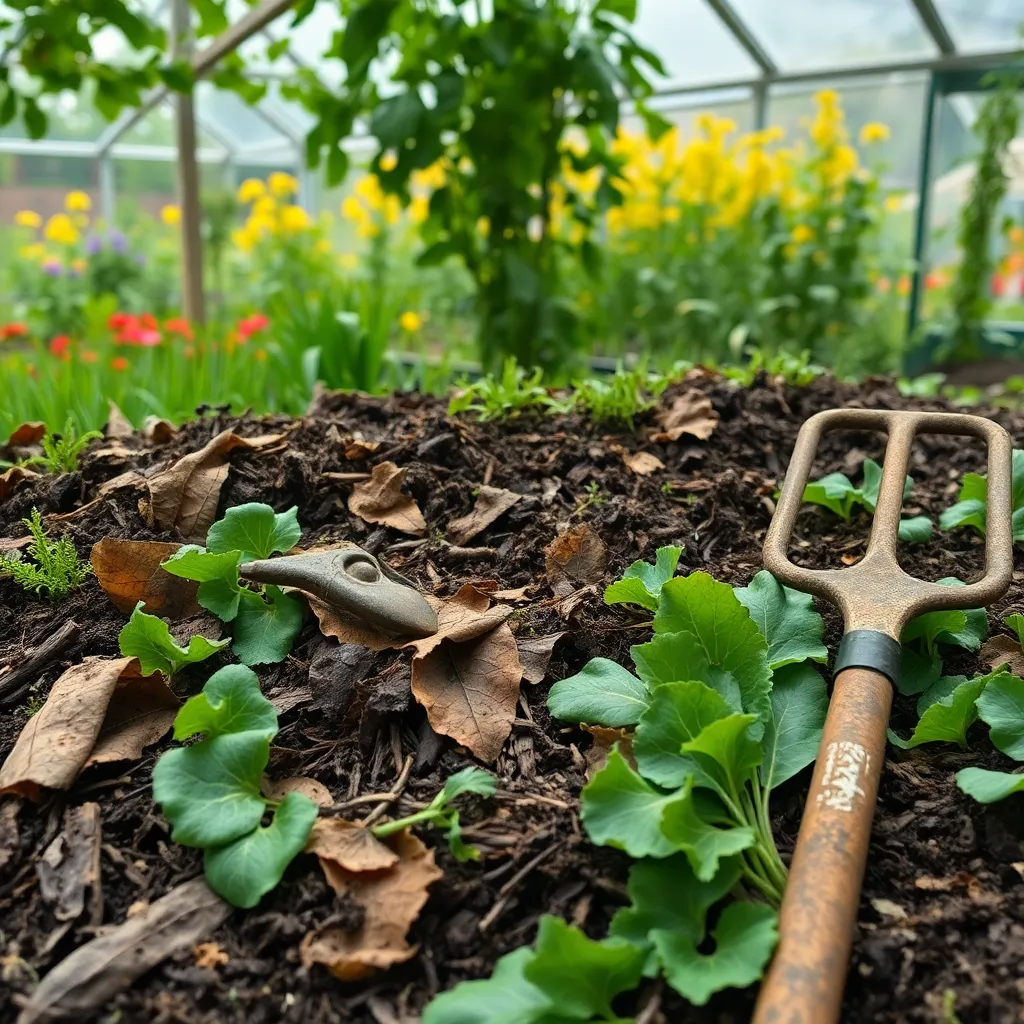
When it comes to composting, ignoring the green-brown balance is a common mistake that can hinder your results. Green materials like vegetable scraps and grass clippings provide nitrogen, while brown materials such as dried leaves and twigs supply carbon.
To maintain an optimal compost environment, strive for a ratio of about 2:1, with two parts brown to one part green. This balance ensures that your compost pile remains healthy and decomposes efficiently, avoiding unpleasant odors.
Beginners should start with simple materials, such as kitchen scraps and fallen leaves, to easily manage the ratio. Turning your pile every few weeks will help keep oxygen levels adequate and support decomposition.
More advanced gardeners can experiment with adding materials like coffee grounds or shredded newspaper to fine-tune the balance. Monitoring moisture levels is also crucial; aim for a consistency similar to a damp sponge to prevent the pile from becoming too wet or too dry.
Adding Meat and Dairy

Adding meat and dairy to your compost pile can seem like a good way to recycle kitchen waste, but it often leads to more problems than benefits. These materials tend to attract pests, such as rodents and flies, which can turn your compost into a breeding ground for unwanted visitors rather than a rich soil amendment.
Instead of meat and dairy, focus on adding plant-based kitchen scraps like fruit and vegetable peels, coffee grounds, and eggshells. These materials decompose more readily and contribute beneficial nutrients without the risk of unpleasant odors or vermin.
For those keen on enriching their compost with protein, consider adding crushed eggshells, which supply calcium, or using green manure like alfalfa. This approach not only supports a balanced compost mixture but also maintains a more pleasant and manageable composting experience.
Advanced gardeners might explore the use of bokashi composting, a method that can handle small amounts of meat and dairy without attracting pests. This technique involves fermenting waste before adding it to the compost, effectively reducing odor and accelerating decomposition.
Neglecting Compost Aeration
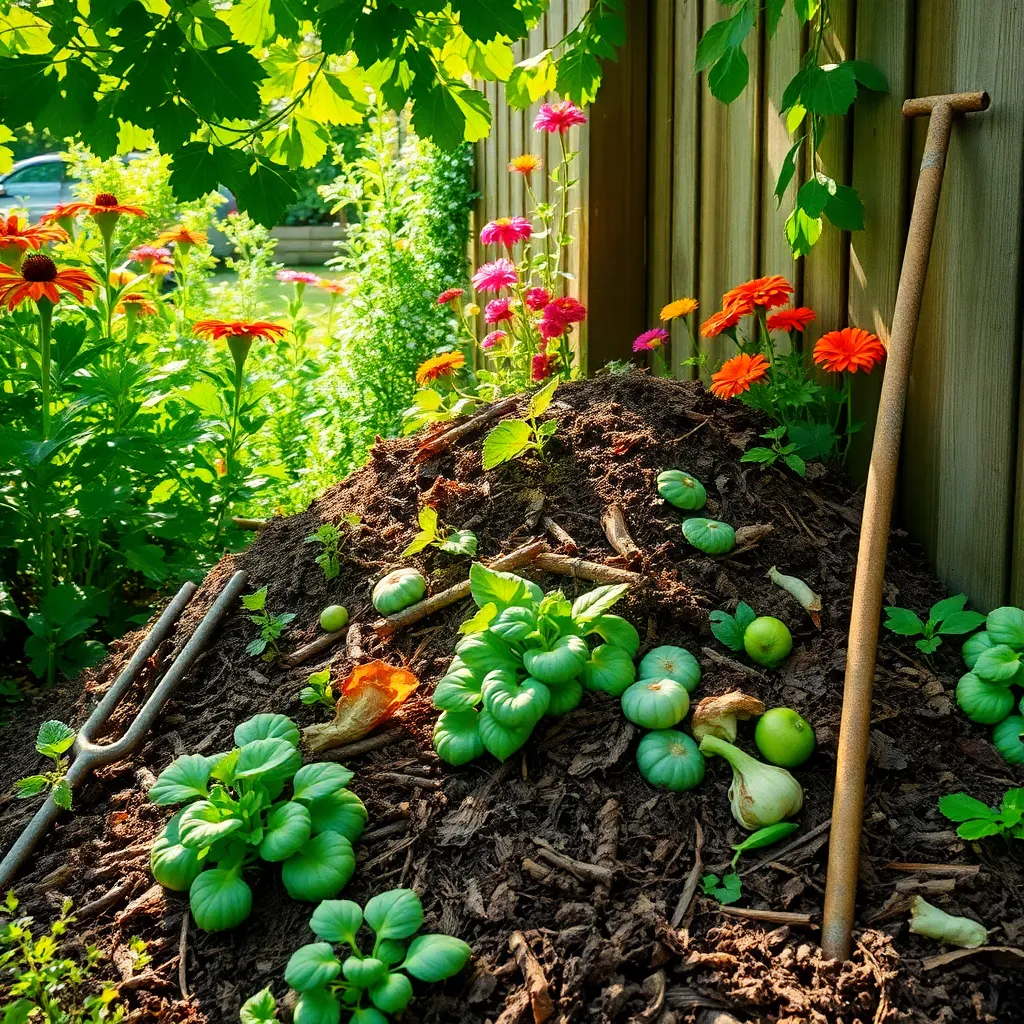
Failing to aerate your compost is a common mistake that can lead to unpleasant odors and slow decomposition. Turning your compost pile regularly introduces oxygen, which is essential for the aerobic bacteria responsible for breaking down organic matter efficiently.
Consider using a garden fork or a specialized compost aerator tool to turn your pile every few weeks. This simple action not only speeds up the composting process but also helps maintain a balanced ecosystem within the pile.
For those with larger compost setups, creating a series of aeration holes or incorporating bulky materials like straw can improve airflow. Layering your compost with coarse materials such as wood chips or twigs can further enhance aeration and prevent compaction.
Beginners may start by incorporating household waste like fruit peels and coffee grounds, ensuring they mix with yard waste for an even texture. Advanced gardeners might experiment with carbon-to-nitrogen ratios, aiming for a balance that optimizes microbial activity and further accelerates decomposition.
Using Treated Wood Ash
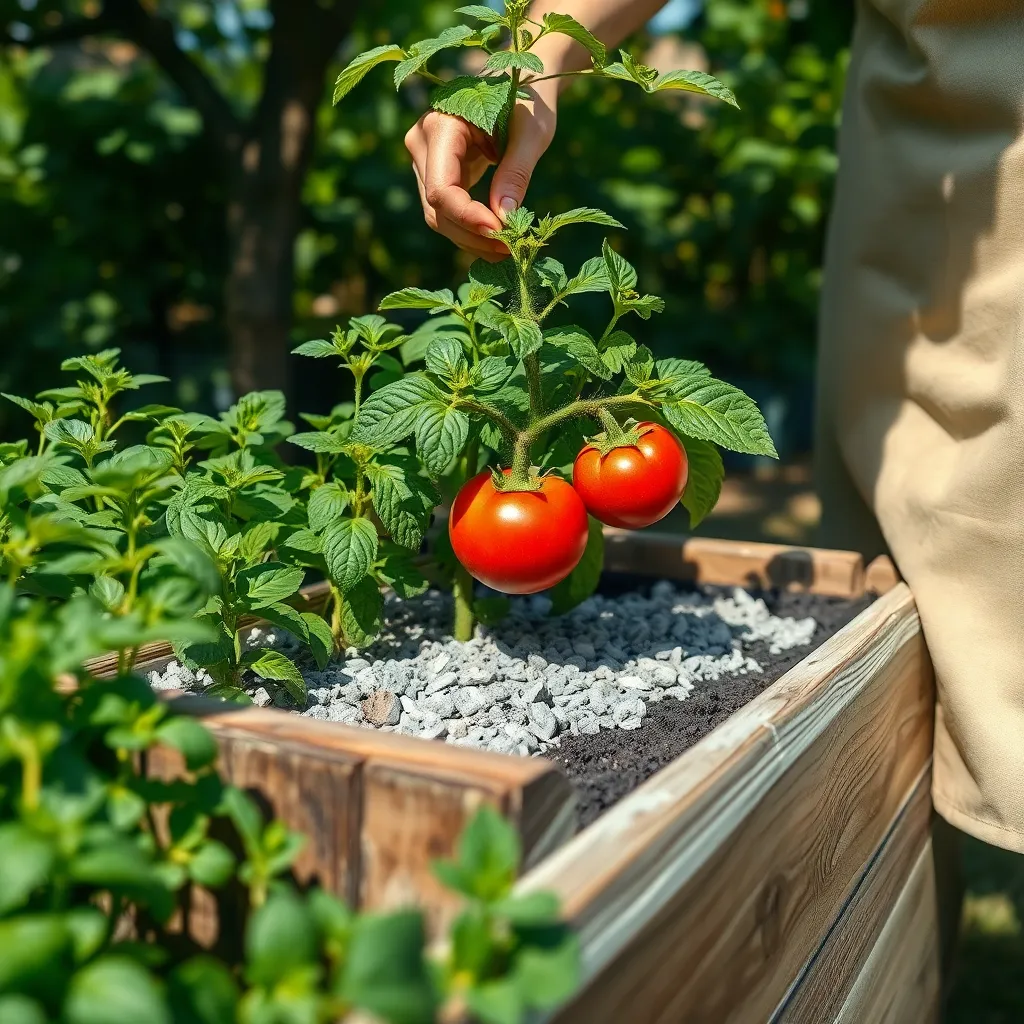
When considering adding wood ash to your compost, it is important to know whether it is treated or untreated. Treated wood ash can contain harmful chemicals that are not suitable for composting and can adversely affect your garden soil. To ensure safety, always use ash from untreated wood, such as natural hardwoods, in your compost pile.
Including wood ash in your compost can help raise the pH level of acidic soils, providing a more neutral environment for plant growth. However, it’s crucial to use it sparingly, as excessive amounts can lead to overly alkaline soil, which can harm plants. A general guideline is to sprinkle the ash lightly over your compost pile and mix it thoroughly to avoid clumping.
For gardeners with experience, utilizing wood ash can offer additional benefits such as adding essential nutrients like potassium and calcium to your compost. These nutrients support healthy plant growth and can improve the structure of your soil. Beginners should start by adding small amounts and observing how their plants respond, adjusting as necessary.
It’s also helpful to know that wood ash can deter certain pests, making it a natural addition to your pest management strategy. Spread a thin layer around the base of plants prone to slugs and snails, as the ash can deter these pests effectively. Always ensure that the ash is cool and dry before application, as wet ash can create a paste that is difficult to manage and less effective.
Overloading with Weeds
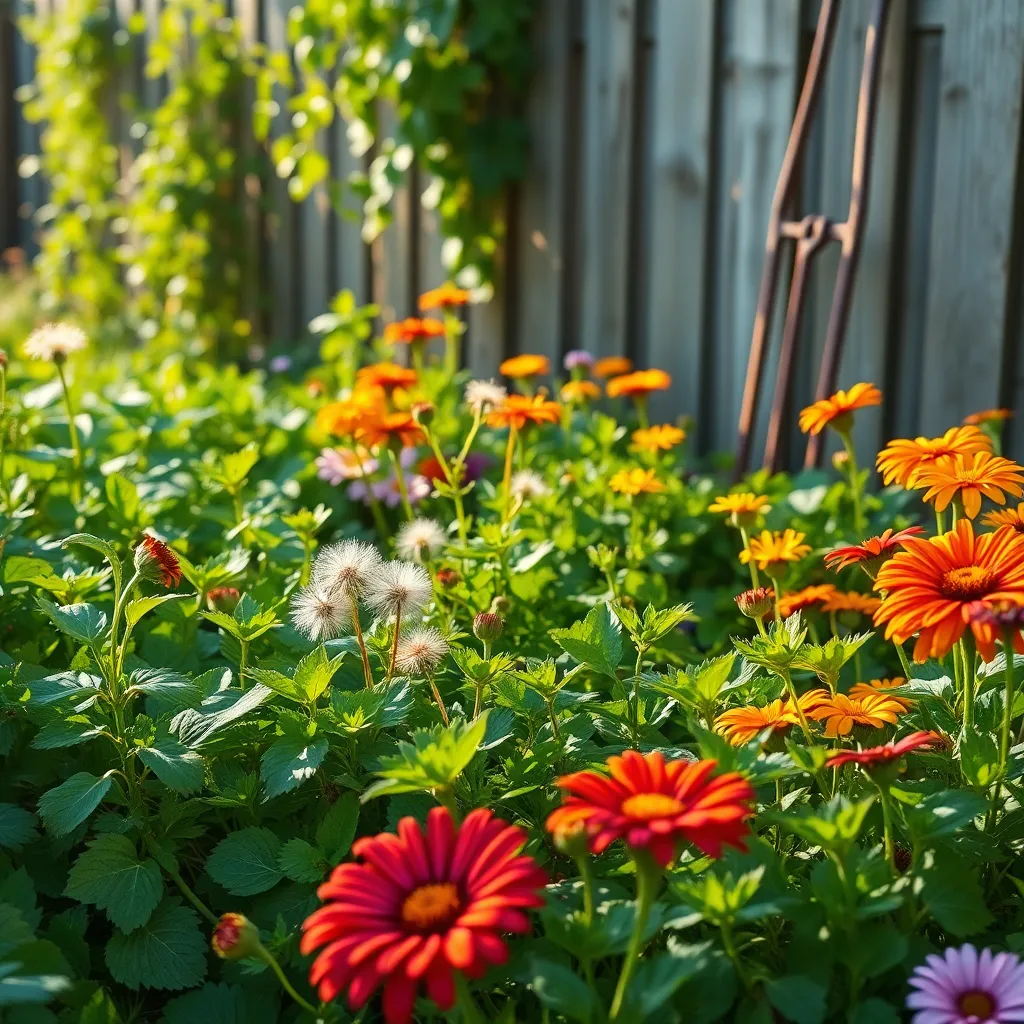
One common composting mistake is overloading your pile with weeds, which can lead to more harm than good. Weeds, especially those that have gone to seed, can resprout if your compost pile doesn’t reach high enough temperatures to kill them.
To ensure weeds don’t become a problem, it’s crucial to manage the temperature of your compost pile. Aim for a core temperature between 130°F and 160°F, which is effective in killing weed seeds and pathogens.
Consider shredding or chopping weeds before adding them to your compost to help them break down more quickly and evenly. This practice not only speeds up decomposition but also helps integrate the material more thoroughly, ensuring a balanced nutrient mix.
For gardeners with limited space or resources, an alternative is to create a separate weed composting area. This allows you to manage weeds separately and monitor their decomposition process more closely, reducing the risk of them taking root in your garden beds.
Skipping Moisture Checks
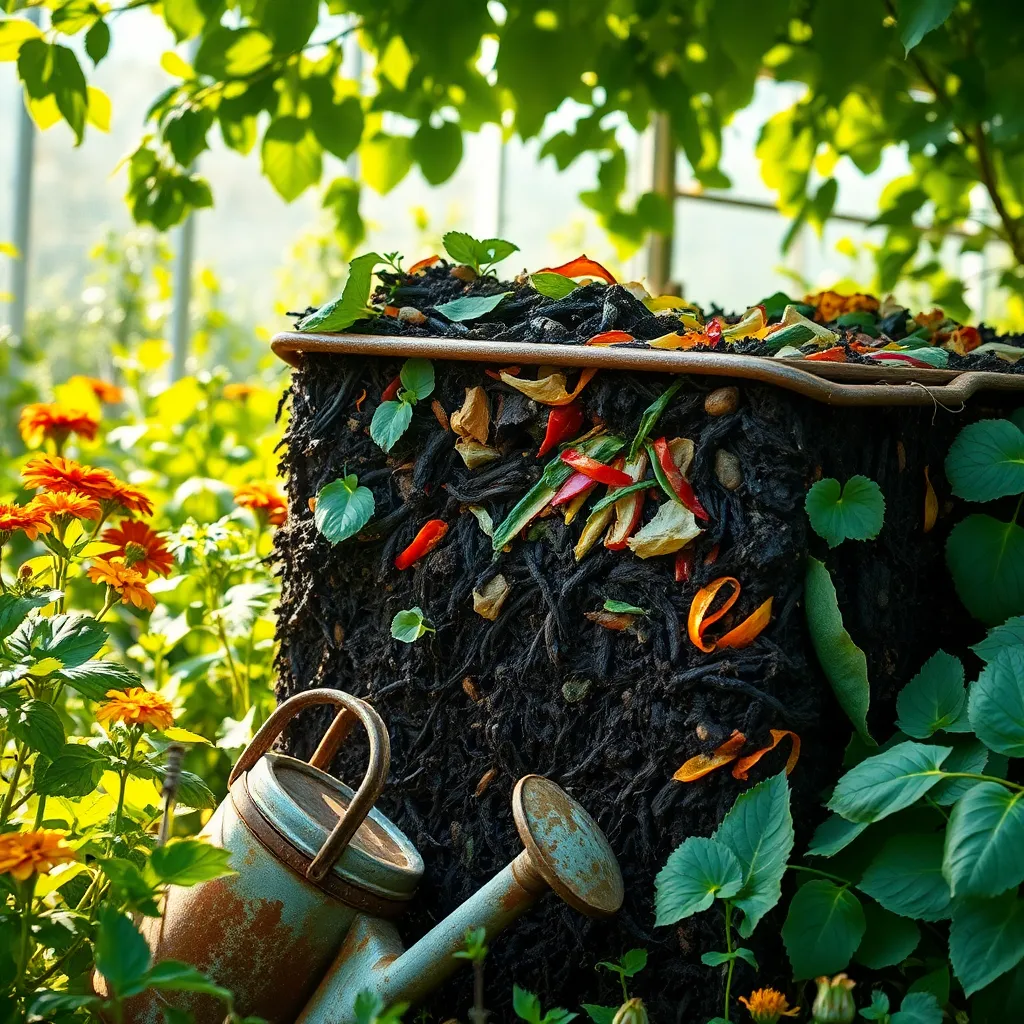
Many gardeners overlook the importance of checking moisture levels in their compost piles, which can lead to inefficient decomposition. Moisture is a critical component that helps microorganisms break down organic matter effectively, so maintaining the right balance is essential.
To ensure your compost pile is adequately moist, aim for a consistency similar to a wrung-out sponge. If the pile is too dry, decomposition will slow down, while excess moisture can cause anaerobic conditions and odors.
Regularly turning your compost pile can help maintain even moisture distribution and introduce necessary oxygen. For beginners, it’s recommended to check your compost’s moisture levels at least once a week, especially during dry or rainy periods.
Advanced gardeners might employ moisture meters for precise measurements, but a simple squeeze test works well for most. Adding dry materials like straw or shredded paper can help absorb excess water, while watering can be done using a hose or watering can if the pile feels too dry.
Composting Diseased Plants

Composting might seem like a great way to dispose of diseased plants, but it can introduce problems. Diseased plant material can harbor pathogens that survive the composting process, potentially spreading throughout your garden when the compost is used.
Instead of composting, it’s safer to dispose of diseased plants by burning them or placing them in the trash, depending on local regulations. This prevents the spread of diseases like blight or rust that can devastate future crops.
To safely compost materials from plants, only include healthy plant debris. Ensure your compost pile reaches a temperature of at least 140°F (60°C) to kill most pathogens, but be aware that not all diseases are eradicated at this temperature.
For those interested in advanced composting techniques, consider setting up a hot composting system. A properly managed hot compost pile, with regular turning and adequate moisture, can reach temperatures sufficient to neutralize many plant pathogens.
Forgetting to Turn Pile
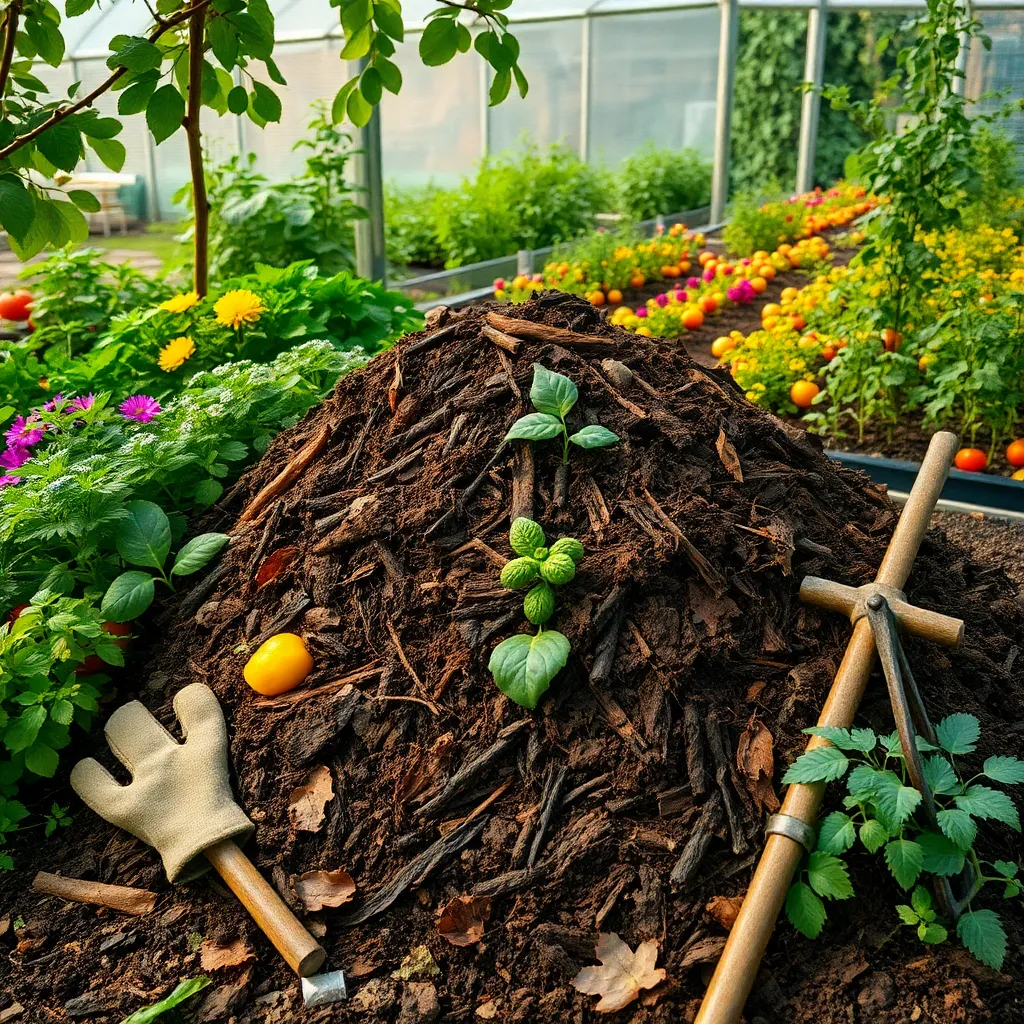
Turning your compost pile regularly is crucial for maintaining an efficient decomposition process. Regular turning introduces oxygen, which is essential for the aerobic microbes that break down organic matter into rich compost.
Many gardeners overlook this step, leading to a stagnant and smelly pile. To avoid this, make it a habit to turn your compost every two to three weeks using a garden fork or a compost aerator tool.
Aeration helps to prevent unpleasant odors and keeps the pile from becoming anaerobic, which can slow decomposition. For those with larger piles, consider dividing the compost into smaller sections to make turning more manageable.
It’s also important to monitor the moisture level of your compost pile. The material should be as moist as a wrung-out sponge, requiring you to add water during dry spells or cover the pile during heavy rains.
Starting with Large Pieces

Starting your compost pile with large pieces can be a common misstep that hinders decomposition. Large items, such as whole branches or thick vegetable stems, take much longer to break down, slowing the composting process significantly.
To accelerate decomposition, it’s essential to chop or shred materials before adding them to your compost pile. This simple step increases the surface area available to decomposing organisms, allowing them to work more efficiently.
Consider using garden shears, a machete, or a chipper to break down larger materials into smaller, more manageable pieces. This practice not only speeds up decomposition but also helps prevent the pile from becoming too bulky and difficult to manage.
For those with access to power tools, a small wood chipper can be an excellent investment for quickly processing woody materials. By turning large, cumbersome items into fine mulch, you improve air circulation and microbial activity within the pile.
Conclusion: Growing Success with These Plants
In navigating the intricate world of relationships, it’s crucial to avoid common pitfalls that can hinder growth and connection. This article highlighted nine key mistakes: neglecting communication, failing to set boundaries, ignoring the need for quality time, overlooking gratitude, harboring unrealistic expectations, avoiding conflict resolution, diminishing self-care, resisting change, and forgetting to nurture intimacy. Each of these elements, when mismanaged, can erode the foundation of any partnership.
As a next step, choose one area to focus on today—perhaps it’s planning a date night to reconnect or having an open conversation about mutual expectations. Taking small, consistent actions can lead to profound improvements.
Remember to save or bookmark this article so you can revisit these valuable insights whenever needed. This resource can serve as a guide to help you navigate your relationship journey with confidence.
Looking ahead, by mindfully addressing these common mistakes, you’re setting the stage for a thriving, resilient partnership. Embrace the opportunity to grow together, and watch your relationship flourish into a source of joy and strength. Your commitment today can lead to a more fulfilling tomorrow.

